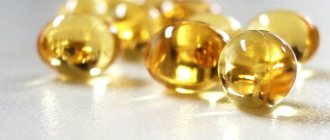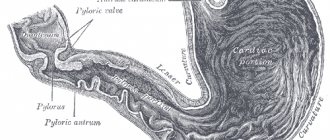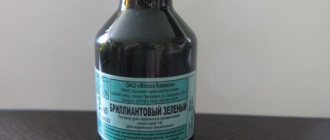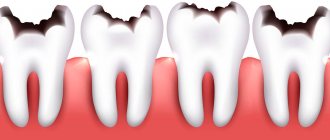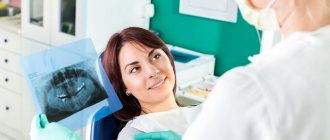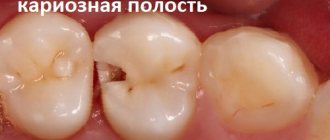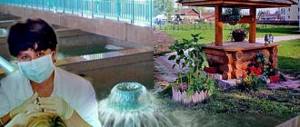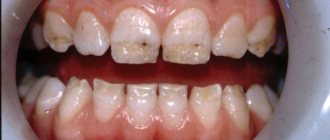Content
- Types of orthopedic diseases
- What does an orthopedist treat?
- Orthopedist-dentist
- What does a pediatric orthopedist treat?
- In what cases should you contact an orthopedist?
- Consultation stages
- Treatment
Officially, doctors in this specialty are called “orthopedic traumatologists”, since these specialists have practical skills in treating both orthopedic and traumatological diseases.
An orthopedist treats pathologies and diseases of joints, muscles, tendons, ligaments, bones and nerve endings.
Orthopedic diseases include pathologies of the musculoskeletal system that are not associated with the presence of acute trauma (these diseases can be a consequence of trauma, but are not acute, but an old, chronic process).
Since the scope of activity of an orthopedic doctor includes congenital defects and pathologies of the skeletal system, post-traumatic conditions and complications of various diseases, depending on the specifics of the disease and the narrower specialization of the doctor, the following are distinguished:
- Conservative (outpatient) orthopedics. In this case, the orthopedist deals with the conservative treatment of chronic diseases of the joints and bones and the prevention of bone diseases in a clinic setting.
- Surgical orthopedics (foot, hand, spine, teeth). An orthopedic surgeon deals with radical treatment of diseases of bones, ligaments and joints.
- Endoprosthetics, which is performed by an endoprosthetist (a surgical orthopedist who replaces the components of the affected organ with anatomically shaped implants, which allows the patient to perform the full range of movements). It is carried out if it is impossible to save joints and bones using other methods of treatment.
- Traumatology and sports orthopedics. A specialist in this profile is engaged in conservative surgical treatment of specific injuries to athletes and injuries to the skeletal system in general.
- Children's and adolescent orthopedics (an orthopedist deals with the prevention and treatment of defects of the skeletal system of infants (up to one year old) and younger children, as well as adolescents).
Since the organs of the masticatory-speech apparatus are distinguished by their special specificity, an orthopedic dentist studies, diagnoses, prevents and treats these organs.
Rules for choosing a doctor
Prosthetics requires the patient not only to be prepared for such manipulations, but also requires receiving services from a reputable and experienced orthopedist.
This is interesting: Is it always possible to do MRI with dental implant systems?
Before choosing an orthopedist, study reviews about him from various sources of information. Practical work experience, the availability of documents and certificates in the specialty, and place of work can tell the patient a lot about a person.
Prosthetics is a serious procedure and is done for a long time, and therefore the choice of a specialist is very important.
In the video, an orthopedic dentist answers frequently asked questions.
Types of orthopedic diseases
An orthopedist treats a wide range of diseases, which, depending on their origin, are divided into groups:
- Trauma-related orthopedic diseases. This group includes false joints formed in the patient due to improper treatment or non-compliance with the doctor’s recommendations, ruptures of ligaments or menisci, displaced adhesions, dislocations (habitual and chronic), shortening of limbs and traumatic amputations. All these disorders at the initial stage are called injuries, which, with adequate treatment, do not turn into orthopedic diseases.
- Congenital diseases - clubfoot, various defects and anomalies in the development of the skeletal system, which are observed in hereditary and genetic diseases.
- Diseases that develop as a result of degenerative processes (osteochondrosis, osteoarthrosis), in which the patient experiences chronic pain and limited mobility in the affected parts of the body are associated with damage to cartilage tissue.
- Orthopedic disorders resulting from various diseases (osteitis and arthritis of various origins, rheumatic joint damage).
What does an orthopedist treat?
An orthopedic doctor treats:
- Osteoporosis. It is a polyetiological chronic progressive systemic and metabolic disease of the skeleton or a clinical syndrome that manifests itself in other diseases. Osteoporosis is characterized by a decrease in bone density (violation of their microarchitecture occurs in different ways and depends on the predominant risk factor of the pathology), increased fragility and a long latent course of the disease. Advanced age, tall height and low weight are risk factors for developing the disease. The pathology is 3 times more common in women than in men, and is detected mainly in representatives of the Caucasian and Mongoloid races.
- Osteochondrosis, which is a complex of dystrophic changes in articular cartilage. The pathology is associated with upright posture and develops during the process of growing up - with age, a physiological decrease in the vascular bed in the intervertebral discs occurs, which leads to their diffuse nutrition and causes dystrophic changes (cartilage loses strength and elasticity, their consistency and shape changes). It can occur in any joint, but dystrophy usually affects the intervertebral discs. According to the location of the pathology, cervical, thoracic and lumbar osteochondrosis is distinguished. Dystrophic changes are aggravated by poor diet, incorrect habitual postures, insufficient warm-up, use of soft pillows and mattresses, and carrying bags on the shoulder. Flat feet and obesity contribute to the development of osteochondrosis.
- Flat feet. It is a change in the shape of the foot, which manifests itself in the lowering of its longitudinal and/or transverse arch. It can be initial, transverse and longitudinal, the shapes can be combined. Transverse flatfoot is accompanied by flattening of the transverse arch of the foot; the anterior section is supported by the heads of all five metatarsal bones, the fan-shaped divergence of which, in combination with the outward deviation of the first toe and the hammer-shaped deformity of the middle toe, leads to a decrease in the length of the feet. Longitudinal flatfoot is characterized by flattening of the longitudinal arch, in which almost the entire area of the sole is in contact with the floor, and the length of the feet increases. The pathology directly depends on body weight - the larger it is, the more pronounced the longitudinal flatfoot (observed more often in women). By origin it can be congenital (determined at 5-6 years), traumatic, paralytic, rachitic and static.
- Cavus foot is a pathology in which the height of the arched arch of the foot increases abnormally (the opposite of flat feet). It occurs as a result of foot injuries, is provoked by certain diseases of the neuromuscular system, and can be hereditary. In addition to external deformation, the patient experiences pain and fatigue when walking.
- Hallux valgus is a pathology in which there is a curvature of the metatarsophalangeal joint of the first toe and a hammer-like deformity of the remaining toes (a “bump” gradually forms at the base of the big toe, preventing the wearing of regular shoes). The disease is accompanied by rapid fatigue of the legs and aching pain in the joints of the feet.
- Intervertebral hernia, which develops when the nucleus pulposus of the intervertebral disc is displaced and is accompanied by rupture of the fibrous ring. Most often the lumbosacral spine is affected, much less often the cervical and thoracic spine. It manifests itself as local pain in the projection area of the affected disc or radiating pain, numbness, weakness and loss of sensitivity in the limbs, etc.
- Periarthritis, which is a degenerative disorder of the tendons where the tendons attach to the bone. Accompanied by the development of reactive inflammation in the affected tendon and nearby serous bursae.
- Radiculitis is a symptom of damage to the roots of the spinal cord, which is characterized by pain along the nerve roots and nerves. Sensory impairment is present and movement disorders are possible. Usually the course is acute, but often the disease becomes chronic with periods of exacerbation.
- Spondyloarthrosis. It is a chronic degenerative disease of the spinal column, which develops when the intervertebral discs become displaced and thinned. The increasing pressure on the facet joints leads to the loss of elastic properties of the hyaline cartilage, which causes the gradual formation of osteophytes (bone marginal outgrowths). Osteophytes can significantly limit the mobility of the affected part of the spine. When the process is neglected, reactive inflammation and complete loss of mobility in the affected area develop.
- Heel spur (plantar fasciitis), which is an overgrowth of the heel bone. The growth is localized in the area of attachment of the Achilles tendon or in the area of the tubercle on the plantar side, and is shaped like a spike or wedge. Occurs due to foot and heel injuries, circulatory problems, and is provoked by metabolic disorders, excess weight, etc.
- Scoliosis is a three-plane spinal deformity that can be congenital, acquired or post-traumatic.
- Arthritis. This name refers to any diseases (damages) of the joints. Arthritis can be acute or chronic, affecting one or more joints.
- Arthrosis. This degenerative-dystrophic disease of the joints is characterized by damage to the cartilage tissue of the articular surfaces with a subsequent inflammatory reaction.
An orthopedist also treats inflammatory diseases of the musculoskeletal system:
- Myositis is a group of diseases of various origins that are accompanied by damage to skeletal muscles (the damage is inflammatory in nature). The symptoms and course of the disease vary, but the common clinical symptom is local muscle pain. The intensity of pain increases with movement or pressure on the muscles, leading to protective tension in the affected muscles and limited joint mobility. Pain and movement restrictions gradually lead to weakness of the affected muscles (even to atrophy).
- Bursitis, in which the mucous bursae in the joint area become inflamed. In most cases, the shoulder joints are affected, less often - the elbow, knee, and hip joints; inflammation of the synovial bursa located between the heel bone and the Achilles tendon is possible. The course of the disease can be acute, subacute, chronic and recurrent. Depending on the pathogen, nonspecific or specific bursitis is distinguished (tuberculous, brucellosis, gonorrheal, syphilitic), and depending on the fluid that accumulates as a result of inflammation - purulent, serous and hemorrhagic. The disease develops due to injury, with frequent repeated mechanical irritations, as a result of infection and diathesis, but pathology may develop without any apparent reason.
- Synovitis, which is an inflammatory process in the synovium of the joint. It is accompanied by the accumulation of fluid (effusion) in the joint cavity, manifested by an increase in the volume of the joint and pain, weakness and malaise. Usually one joint is affected (usually the knee). The disease develops with injuries, allergies, infections, certain blood diseases, endocrine and metabolic disorders.
In addition, the orthopedist also treats congenital pathologies:
- Torticollis is a pathology that occurs as a result of changes in the soft tissues of the neck, skeleton and nerves. It is manifested by an inclined position of the head, which is turned in the direction opposite to the affected area. It can be congenital, acquired, spastic, reflex, arthrogenic, hypoplastic, dermatogenic, compensatory, bone and neurogenic. Congenital torticollis occurs with hypertrophy of the sternocleidomastoid muscle, its scarring and shortening due to incorrect position of the fetal head or a defect in the development of the cervical spine).
- Clubfoot is a deformation of the foot in which it deviates inwardly from the longitudinal axis of the leg. It can be equinovarus (the foot is turned inward and downward), varus (the heel is turned inward) and valgus (the heel is turned outward). This congenital defect is bilateral in half of the cases and is common in newborns (1:1000), but can also develop with muscle paralysis and damage to the bones, ligaments of the foot and lower leg.
- Hip dysplasia. This pathology is a congenital defect of the joint (occurs when it develops incorrectly). It can lead to subluxation or dislocation of the femoral head; in 80% of identified cases it is observed in girls; familial cases account for 1/3 of all cases of the disease. Risk factors are drug correction of pregnancy and toxicosis. Usually the left hip joint is affected (60%), less commonly the right (20%) or bilaterally (20%). Dysplasia is characterized by a significant change in the shape, relationship and size of the structures of the hip joint (the main forms of dysplasia are acetabular dysplasia, proximal femoral dysplasia and rotational dysplasia).
An orthopedist specializes in the treatment of dislocations and fractures.
Modern orthopedics in Moscow
Orthopedics is a branch of medicine that deals with problems of the musculoskeletal system. Every year qualified orthopedists are becoming more and more in demand. Arthrosis and arthritis, back pain, foot deformities, ligament and tendon ruptures, fractures and dislocations - this is an incomplete list of complaints with which patients turn to doctors of the European Medical Academy. Paul Ehrlich.
The clinic actively cooperates with leading orthopedists in Germany. Patients who would like to go abroad for treatment and have high hopes for Western medicine can receive equally effective care in our center by contacting us and saving their home budget.
We regularly invite qualified orthopedists from leading clinics in the world for consultations and help patients make an appointment with international professors.
The center is equipped with the most modern diagnostic equipment and high-quality new generation medical equipment. Our doctors have unique techniques, thanks to which a high percentage of patients return to an active life after treatment.
The main directions of our orthopedic clinic
- spine treatment;
- therapy of joint pathology;
- treatment of foot and hand injuries;
- traumatic surgery;
- arthroscopic surgery;
- rehabilitation after surgery, serious bruises and injuries;
- prevention of diseases of the motor system;
- production of individual insoles using unique technology;
- a varied range of physiotherapeutic procedures;
- soft tissue restoration;
- development of individual treatment and recovery programs based on diagnostic data;
- the possibility of obtaining a “second opinion” in situations that are in doubt.
What complaints do patients usually come to our Center with?
The range of complaints with which patients come to the orthopedic center is quite wide. Most often, patients complain about:
- arthralgia and inflamed joints;
- muscle pain and cramps;
- limb deformation;
- unsteady gait;
- side effects after surgical interventions;
- rachiocampsis;
- pain in the foot area;
- the appearance of a “bone” on the big toe;
- to ineffective rehabilitation after fractures or injuries;
- long-term healing of wounds and bruises;
- back pain;
- limitation of joint functions.
Specialists will not only find out the cause of the disease, but also offer the best treatment program. Experienced doctors use the latest developments, and an integrated approach to therapy gives excellent results. Our Center carefully approaches not only the selection of personnel, but also the equipment. New generation diagnostic and treatment equipment from well-known world brands with medical imaging are presented here.
What pathology do the Center’s doctors encounter most often?
The range of diseases that are treated in our orthopedic center is diverse and extensive; these can be both congenital and acquired ailments.
For example:
- arthritis of various origins;
- arthrosis;
- osteoporosis;
- foot problems;
- hallux valgus;
- intervertebral hernia;
- injuries;
- consequences of bruises and fractures;
- fibromyalgia;
- contractures;
- gout;
- poor posture;
- bursitis;
- shoulder periarthritis;
- tendon ruptures;
Our specialists approach treatment comprehensively, identifying and, if possible, eliminating the cause of the disease, focusing on physiotherapeutic procedures that reduce the risk of side effects to a minimum. After a course of therapy, there is an improvement in the condition due to the relief of muscle spasm and stimulation of blood circulation in the affected area. Patients note a decrease in pain sometimes after 2-3 sessions of individually selected physical therapy. The doctor will monitor the recovery process, and if necessary, he will be able to adjust the treatment regimen in time.
High-precision orthopedic diagnostic equipment and treatment equipment
The Center has new generation equipment at its disposal, which helps make a diagnosis even in the most difficult cases, it allows you to distinguish the nature of the pathological process and analyze the condition. In addition, according to indications, the following are used:
- little-known manual muscle testing (MMT), it evaluates the work of skeletal muscles;
- arthrophonography – reveals the condition of articular cartilage;
- to analyze the state of the spine not only at rest, but also in motion, the unique “DIERS” system is used, which allows you to create a three-dimensional model of the spinal column and examine in detail all areas of the main axis of the body in 4D mode;
- The DIERS pedogait system can identify not only real, but also potential foot problems.
All methods are absolutely safe and effective.
Treatment of orthopedic diseases
The treatment regimen is prescribed individually. All manipulations are carried out strictly taking into account sanitary and epidemiological rules. Minimally invasive surgical technologies, medications, and restorative techniques are used for treatment. There is a wide range of physiotherapeutic procedures available.
The most popular of them are:
- PHYSYS (ZIMMER) – a physiotherapeutic device with several functions for combined treatment (electromyostimulation, ultrasound, etc.);
- Arthrex ACP System – treatment technology with its own plasma;
- MBST – magnetic resonance therapy with special waves that have an effect comparable to surgery, but at the same time it is safe and comfortable;
- laser beam is one of the most effective methods; laser therapy is very popular for joint pathologies;
- ozone therapy – ozone treatment has a strong bactericidal and immunomodulating effect;
- cryotherapy – cold treatment provides a powerful anti-inflammatory effect
- kinesiotherapy - development of joints using unique equipment;
- Kinesio taping is a new type of treatment using special patches;
- shock wave therapy is a highly effective non-surgical method in which extracorporeal waves, penetrating the body, cause various positive effects; for muscle and tendon disorders, it is usually combined with other techniques;
- the P-DTR method is a proprioceptive deep tendon reflex, thanks to its activation it is possible to reconfigure the proprioceptors of the problem area;
- Orthokine therapy – autostimulation of cartilage regeneration, unique results especially in osteoarthritis and in sports medicine;
- manual therapy - used for both therapeutic and preventive purposes;
All these techniques have long been appreciated by patients with damage to the motor system in many advanced countries of the world. They are effective and safe.
Effective prevention of orthopedic problems
Everyone knows that it is better to prevent a disease than to treat it for a long time. If you are thinking about your health, if you have unfavorable heredity, and even more so, if your body is giving some signals about trouble, do not waste time and contact us. Doctors will listen to you carefully, identify all risk factors and answer your questions, if necessary, determine the condition of the joint spaces, and check the spine and feet.
- the Center will recommend unique orthopedic insoles made using the FormThotics method;
- the doctor will talk about optimizing the daily routine, taking into account the identified risk factors;
- athletes will be told about taping methods, how to apply tape correctly, combining tension effects and will be offered a wide range of tapes;
- specialists will help plan optimal rehabilitation after injuries;
- You will be offered a course of preventive massage and unique procedures that restore cartilage tissue;
- You will learn how to strengthen bone tissue with osteoporosis;
- Together with our doctor, you have the opportunity to create a healthy and bone-healthy diet;
- You will be able to get an expert opinion from a doctor – a “second opinion”.
Comfortable and effective orthopedics in our medical center
At the European Medical Academy named after. Paul Ehrlich is staffed by experienced medical staff. Our doctors systematically participate in international conferences, attend medical and pharmacological exhibitions, and actively introduce innovative technologies into their daily work. Our specialists work closely with leading orthopedic clinics, regularly undergoing training in them and then accumulating within the walls of the Center all the best and most effective. Patients note the conscientiousness and sensitivity of doctors, a special friendly atmosphere, and the high professionalism of specialists.
Carefully adjusted therapy often avoids operations; doctors achieve stable remission for chronic ailments, relieve or relieve pain, restore the integrity of the musculoskeletal system, and return patients to a full life.
Orthopedist-dentist
An orthopedic dentist is a doctor who specializes in dental prosthetics (restores the external and internal parts of the tooth).
Before prosthetics, this specialist examines the condition of the oral cavity and jaw, as well as the patient’s body as a whole, carries out the necessary preparation, takes an impression and makes a prosthesis taking into account the patient’s characteristics.
Possible application:
- Microprosthetics. It is carried out when a significant part of the tooth is preserved (inlays and veneers made of ceramics are used).
- Removable prosthetics. The prosthesis can be partial (bridge) or complete, consists of a nylon base and artificial teeth, and is secured using special compounds or locks. Partial removable dentures are installed even in children to maintain proper dentition after the loss of a baby tooth.
- Fixed prosthetics (crowns and bridges).
Specializations and methods of prosthetics
During orthopedic treatment, various techniques are used, each of which has its own specific indications.
Microprosthetics
Microprosthetics is a method used by dentists in situations where a tooth, although preserved to a greater extent, cannot function normally or has an unpresentable appearance.
To correct such problems, orthopedists use inlays and veneers. An inlay is almost the same as a filling, only more elaborate. Using inlays, only part of the tooth is recreated. Most of all, they are used when restoring parts of chewing teeth, for which, in addition to appearance, functionality is extremely important.
The inlays are made from a very durable material - ceramics. In addition to strength, this material also has a number of advantages. First of all, it has an excellent appearance, similar to tooth enamel. In addition, ceramics are absolutely safe for the human body, as they are of natural origin.
In addition to ceramic inlays, veneers are also made. Prosthodontists use them on the front teeth to create a beautiful smile. Veneers are not used to restore chewing molars, since the product is quite fragile and is intended for the front side of the teeth.
Veneers are fairly thin plates, about half a millimeter thick. Their shape follows the outer part of the tooth, at the base of which there is a depression. Using special cement without color, odor or side effects, orthopedic doctors attach veneers to the teeth. Cement is very durable and can last for about ten years.
Veneers can eliminate many defects in tooth enamel. These are scratches, chips, cracks, natural yellowness of the teeth, as well as their slight curvature.
Before installing veneers, dentists grind down the enamel of the teeth so that after installation it does not take a long time to get used to them, and they do not interfere with the patient’s smiling, talking and eating. This stage of installation is the most unpleasant for the patient. When removing enamel, the dentist needs to be as careful and careful as possible. The enamel is removed with a drill, and anesthesia is applied.
The result of installing veneers is a perfect smile in a couple of days. If worn carefully, they will last a very long time without changing their appearance.
A patient who has veneers installed will need to wear them constantly, changing them every 10 years, since worn-down enamel is not restored. With each veneer replacement, the orthopedic dentist will have to grind down the enamel again and again. After such procedures, the tooth will become thinner and thinner, and eventually it will need to be replaced with a crown - a permanent prosthetic product.
Tabs
They resemble fillings, but with the difference that they are made of ceramic , and therefore have great strength and excellent appearance.
Inlays are made from impressions and are mainly used for prosthetics of chewing units.
Veneers
These are thin (0.5 mm) plates glued to the front surface of the tooth in order to hide its defects (chips, scratches, yellowness).
In their shape, veneers exactly repeat the outer part of the tooth, to which they are glued using a special cement that is biocompatible with dentin, colorless and odorless.
The adhesive ensures a long – up to 10 years – service life of the veneer. With each replacement, the enamel becomes thinner due to grinding.
The advantages of veneers include the relative ease of installation and the excellent appearance they give to the oral cavity.
The disadvantages are the need for periodic replacement and the inability to withstand significant chewing loads. Therefore, they are installed only on the front units.
Lumineers
In terms of function and appearance, these are almost the same as veneers, with the only exception - they are much thinner than veneers, which allows them to be installed without grinding down the enamel.
Advantages of microprosthetics:
- These are gentle operations that do not injure healthy neighboring teeth;
- Not only aesthetics are restored , but also functionality;
- Impeccable quality. Thanks to the ability to make from impressions, very high quality microprostheses are ensured.
- The ability to use the most modern materials , similar in characteristics to natural enamel.
In many cases, microprosthetics is an ideal, without a worthy alternative, method of high-quality and quick restoration of the appearance and functionality of teeth.
Permanent prosthetics
This type of prosthetics includes bridges and crowns, which are larger and more durable products than veneers and inlays.
A crown is a kind of cap that is placed on a tooth and replaces its visible part.
The purposes of using crowns are different. With their help, orthopedists can restore damaged or even missing teeth, as well as attach a bridge or removable prosthesis to them.
The crown is made in a dental laboratory and then attached to an implant or treated tooth.
The need for crowns arises in cases of severe tooth decay due to physical damage or diseases of the oral cavity (primarily caries). In these cases, microprosthetics will not help.
Crown installation steps:
- Tooth preparation. Grinding it and the required small workpiece (stump). The dentist removes the required amount of enamel and dentin (2 - 3 millimeters) from all sides of the tooth. In the case of installing a prosthesis on a titanium implant inserted into the jaw, the procedure does not occur until the tissue has completely healed.
- Formation of an impression from which the prosthesis will be made.
- Test wearing. The crown is installed using temporary cement. The patient uses it for some time and observes the condition.
- Final installation. If there is no discomfort when wearing a temporary crown, you can install it using stronger cement.
Crowns, depending on the characteristics of the patient and the recommendations of the orthopedic surgeon, can be made of plastic, metal or ceramics.
Ceramic crowns are durable and have an excellent appearance. But the material is quite expensive due to its many positive qualities.
This is interesting: How and how to clean removable dentures at home
Metal-ceramic crowns have a titanium frame and are coated with ceramic on the outside. For this reason, their prices are more affordable. But the appearance is inferior to ceramic ones, since metal can be seen through thin ceramics.
Plastic crowns are worn for no more than a year, so they can be classified as temporary. Often, orthopedic dentists install them temporarily while the permanent ones are being made.
Using a crown if you lose one tooth is an excellent option, but if several teeth are missing at once, this method loses. After all, you will need to install implants, pay for their cost and the cost of each crown.
As dentists say, in this case it is better to use bridges. These are the same crowns that are combined into one system and replace several teeth at once.
The duration and cost of installing bridges is quite less, so their installation in the absence of several teeth is much more profitable. Bridges are usually attached to inlays or telescopic crowns.
Crowns
These are orthopedic structures in the form of a cap covering all or part of the crown.
They are used if the defect cannot be corrected by filling or installing an inlay, as well as to change the color, position or shape of teeth, to attach bridges or splinting.
Depending on the degree of coverage of the tooth, crowns can be full or partial. By material - metal, non-metal (plastic, ceramic) and combined (a combination of metal with plastic or ceramics).
According to the manufacturing method, there are cast, stamped, soldered, milled, polymerized, and also produced by firing (ceramic and porcelain).
Bridges
Such structures are used if several adjacent units have been destroyed.
Along the edges of the bridge are crowns that are placed on the supporting units.
The structure located between them - a “bridge” - replaces one or more missing teeth.
Implants
Dental implants are an artificial structure that is inserted into the bone tissue of the jaw and then fuses with it.
They look like screws or thick screws. Implants take over the function of the roots of the lost units, and are used as a base for restoring rows.
Removable prosthetics
Today, removable dentures are used not only by older people.
They are often necessary even for children. After the loss of a baby tooth, dentists provide children with a removable denture to prevent curvature of the dentition until a new one grows. Removable dentures can be removed and put on at the right time. Which makes caring for them and the installation process itself quite simple.
Note: For older people, installing removable dentures is most acceptable, because installing implants in old age is risky, and if a tooth is lost, you can either resort to implantation or use a removable denture.
A removable denture includes a plastic or nylon base and artificial teeth.
The prosthesis can be complete (for the entire jaw) or partial, which is essentially a bridge, only it can be removed.
Orthopedists attach a removable denture using special locks or compounds.
The most common clasps are clasps in the shape of a semicircle, clasping the abutment teeth on both sides. Clasps are used to secure partial dentures, while full dentures are held in place with glue or suction. Dentures are most tightly secured using locking implants.
Conditionally removable technique
The conditionally removable technique involves the use of clasp prosthetics or installation of structures on implants. The orthopedic device is considered conditionally removable, as it is fixed using special latches.
The structure can only be removed by applying a certain force. In some cases, the help of an orthopedist may be needed. This type of technique is indicated both in the absence of all teeth and a small group of them.
What does a pediatric orthopedist treat?
A pediatric orthopedist is a doctor who diagnoses, treats and prevents pathologies associated with dysfunction of the musculoskeletal system.
An orthopedist treats young children:
- neck pathologies (torticollis, pterygoid neck, Grisel's disease, short neck syndrome, etc.);
- pathologies of the spine (kyphosis, lordosis, scoliosis);
- congenital pathology of the upper extremities (syndactyly, polydactyly, club-handedness, high scapula);
- congenital pathology of the lower extremities (dislocation of the femur, dislocation of the patella, flat feet, clubfoot).
The reason for contacting an orthopedic doctor may be if a child has:
- incorrect hip position;
- rapid fatigue when walking;
- heavy gait (may be a sign of flat feet);
- stoop;
- constant tilting of the head to one shoulder or the presence of other “habitual” poses;
- complaints of pain in the limbs, neck or back;
- congenital pathologies of the musculoskeletal system.
Orthopedic Institutes
Central Research Institute of Traumatology and Orthopedics named after. N. N. Priorova
Orthopedics, traumatology and prosthetics are three interconnected branches of medicine, each of which inherently includes the other two. Much credit for the development of these sciences belongs to R. R. Vreden, G. I. Turner, G. A. Albrecht, N. N. Priorov, N. N. Burdenko, N. A. Bernshtein, M. I. Sitenko, V. D. Chaklin, B. P. Popov, M. V. Volkov and many others To: Wikipedia: Articles without sources (type: not specified) [ source not specified 2864 days
].
On April 22, 1921, the Medical and Prosthetic Institute of the Moscow Department of Health was organized to treat disabled people of the First World War and Civil War and to develop current problems in orthopedics and prosthetics. Its creator and long-term leader was the largest orthopedic traumatologist, full member of the USSR Academy of Medical Sciences, Honored Scientist of the RSFSR, Professor Nikolai Nikolaevich Priorov (1895-1961). Since 1940, this institute became known as the Central Institute of Traumatology and Orthopedics of the USSR Ministry of Health (CITO), which became the country's leading institution in this field of medicine, and in 1971 it was named after Priorov. This institute was a methodological center for 19 research institutes of traumatology and orthopedics, opened in major cities of the USSR: Wikipedia: Articles without sources (type: not specified)[ source not specified 2864 days
].
In 1952, a department of sports, ballet and circus trauma was created at the institute, headed by Z. S. Mironova. At this department, operations were performed on many outstanding Soviet athletes and artists K: Wikipedia: Articles without sources (type: not specified)[ source not specified 2864 days
].
Central Research Institute of Prosthetics and Prosthetics
In May 1940, a research clinic of orthopedics and prosthetics was organized in Moscow (director M.I. Fridlyand), and in 1943 it was renamed the Moscow Research Institute of Prosthetics (TsNIIP). From 1943 to 1947, the TsNIIP was headed by the outstanding Soviet orthopedist Vasily Dmitrievich Chaklin (1892-1976), and then Boris Petrovich Popov. If until the 40s the medical and prosthetic institute (the future CITO) dealt with issues of prosthetics, then gradually this function was transferred to the CIPP. In 1948, the Moscow Institute of Prosthetics was merged with the design bureau of prosthetics and reorganized into the Central Research Institute of Prosthetics and Prosthetics (TsNIIPP). Since 1972, it has been entrusted with the functions of the leading institute and methodological center of the USSR in the field of prosthetics and prosthetic construction. K: Wikipedia: Articles without sources (type: not specified)[ source not specified 2864 days
].
Turner Scientific Research Institute of Pediatric Orthopedics and Traumatology
Federal State Institution "Research Children's Orthopedic Institute named after. G.I. Turner “Rosmedtekhnologii” is the only specialized medical and scientific institution of federal significance in the country to provide assistance to children and adolescents with congenital and acquired pathologies of the musculoskeletal system. Founded in 1932 on the basis of a charitable Home for children of paralytic cripples, created in 1890 with the assistance of the great orthopedist Professor G.I. Turner, the institute has unique experience in scientific and clinical work, for the success of which and in connection with the fiftieth anniversary in In 1982 he was awarded the Order of the Red Banner of Labor. Being the leading institution on the problem of “Children’s Orthopedics and Traumatology”, during the year the institute’s clinic treats more than 1.5 thousand children and adolescents with diseases of the musculoskeletal system. K: Wikipedia: Articles without sources (type: not specified)[ source not specified 2864 days
].
In what cases should you contact an orthopedist?
An orthopedist is needed for patients who have:
- pain in the joints after exercise;
- restrictions on movement in joints;
- a feeling of instability in the joints when moving and supporting;
- lack of complete recovery after injury (discomfort is felt);
- pain in the back, neck, limbs;
- poor posture, fatigue;
- any anomalies in the joints and bones (changes in normal shape, etc.).
Consultation stages
Orthopedist during consultation:
- clarifies the patient’s medical history and complaints (what symptoms bother the patient, what chronic diseases the patient has, etc.);
- examines joints and spine using palpation and visual inspection methods, conducts tests for motor functions;
- refers for additional examination;
- selects treatment methods.
Depending on the suspected diagnosis, additional examination may include:
- X-ray, which allows you to quickly assess the condition of the skeletal system, identify arthrosis, osteochondrosis, and establish the stage of the disease. Does not require preliminary preparation, helps to carry out differential diagnosis with diseases that have a similar clinical picture.
- Ultrasound, which allows you to examine joints and damaged tendons, has no contraindications and is performed without prior preparation.
- MRI and CT are the most informative methods that allow you to most accurately assess the picture of what is happening in the part of the body of interest (both bones and soft tissues are visualized).
To diagnose osteoporosis, the orthopedist also uses biochemical methods, and a biopsy specimen is examined.
If necessary, the orthopedist can refer the patient to specialized specialists (arthrologist, neurologist, etc.).
Objectives of orthopedic dentistry
Unfortunately, teeth do not have the ability to recover. And the main task of dental orthopedics is to improve and improve the methods used in prosthetics.
In addition, orthopedic dentistry performs the following tasks:
- for the treatment of diseases of the maxillofacial apparatus using various designs;
- to restore the main functions of the patient’s dental system (chewing, speaking, swallowing);
- to keep the remaining teeth healthy;
- to ensure the aesthetic appearance of artificial and restored teeth.
Each clinic that provides orthopedic dentistry services, except for the office of an orthopedic dentist, must be equipped with a dental laboratory.
The main examination methods in such a clinic are: interview, collection of anamnesis data, examination and assessment of the condition of the oral cavity, panoramic photographs of the jaws.
Treatment of diseases of the maxillofacial apparatus
When treating jaw pathologies, the orthopedist must solve the following problems:
- correct diagnosis of the disease. Even minor details must be taken into account during diagnosis;
- precise determination of the appropriate treatment method, with the preparation of a specific treatment plan;
- the most approximate prediction of the results of dentition correction in terms of timing and appearance.
As a rule, treatment of jaw diseases begins with a visual examination and a detailed survey, which are carried out to obtain a general clinical picture of the pathology.
To study it in detail, additional examination methods are prescribed: orthopantomogram, radiography of the jaw, MRI. If dental diseases of the dental and periodontal tissue are detected, the orthopedist must refer the patient to a dental therapist for their relief.
The orthopedist needs to monitor all stages of treatment, from the first visit to complete elimination of the problem.
Restoration of functions: chewing, speech, swallowing
Functional restoration is carried out by eliminating defects in a number of teeth , which is carried out using various types of prosthetics. To do this, the doctor uses removable, fixed or partially removable structures.
During the recovery period, the orthopedist must ensure the correct taking of impressions, accurate production of prostheses and their high-quality installation. The doctor’s task will be not only to correctly carry out the correction, but also to monitor it in the period after installation.
Preventive
The preventive tasks of an orthopedist include familiarizing patients with basic rules of oral care that would allow them to save their teeth.
This is interesting: Features and advantages of silicone dentures
He can select the optimal cleaning products for the patient and explain the rules that will maximize the life of the dentures.
Restoration of aesthetic defects
Separately, the restoration of minor defects is considered, with the preservation of the tooth root, but more than half of the upper part destroyed. To do this, they resort to microprosthetics .
The task of the orthopedist during restoration will be to restore the surface of the destroyed part of the tooth without removing the neurovascular bundle. Veneers, inlays, and lumineers, which are made from a variety of materials, are used as microprostheses.
Pediatric orthopedics
Pediatric orthopedics involves the restoration of the dentition in order to ensure the correct development of the maxillofacial apparatus and bite. In case of early loss of baby teeth, the orthopedist must promptly eliminate the gap formed, using crowns or splinting.
The features of this procedure will be described in the following video:

